Lumen
Lumen
Jenny E. Sabin1, Dillon Pranger1, Clayton Binkley2, Kristen Strobel2, Jingyang (Leo) Liu3
1Jenny Sabin Studio / Cornell
2Arup
3Sabin Lab/ Cornell
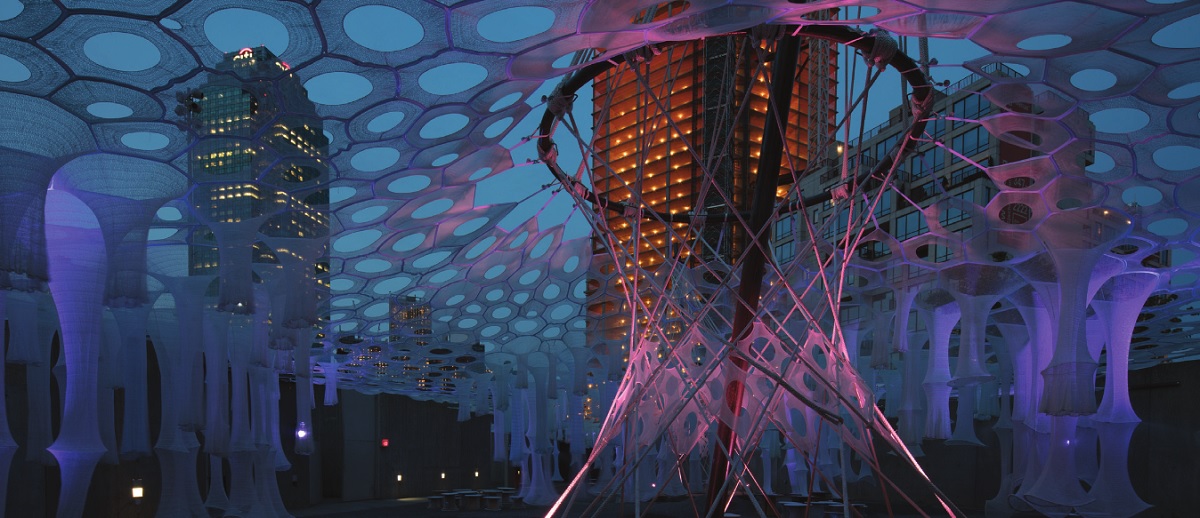
This paper documents the computational design methods, digital fabrication strategies, and generative design process for Lumen, winner of MoMA & MoMA PS1’s 2017 Young Architects Program. The project was installed in the courtyard at MoMA PS1 in Long Island City, New York, during the summer of 2017.
Two lightweight 3D digitally knitted fabric canopy structures composed of responsive tubular and cellular components employ recycled textiles, photo-luminescent and solar active yarns that absorb and store UV energy, change color, and emit light.
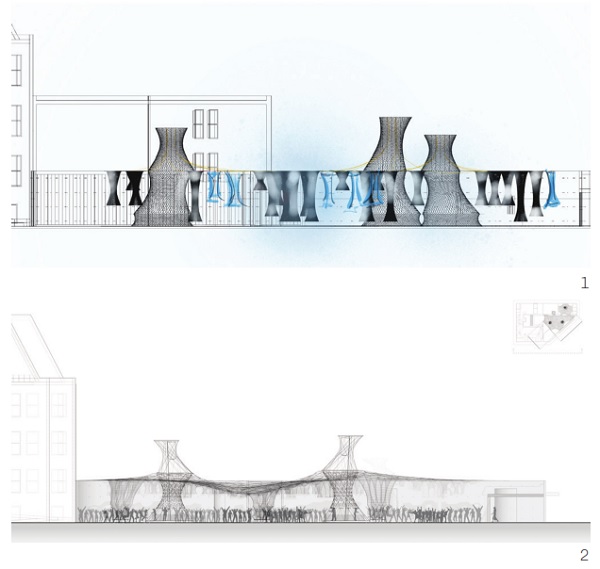
1 Early concept drawings for the tower and canopy design
2 Elevation proposal drawing; Lumen during WarmUp.
This environment offers spaces of respite, exchange, and engagement as a 150 x 75 foot misting system responds to visitors’ proximity, activating fabric stalactites that produce a refreshing micro-climate. Families of robotically prototyped and woven recycled spool chairs provide seating throughout the courtyard.
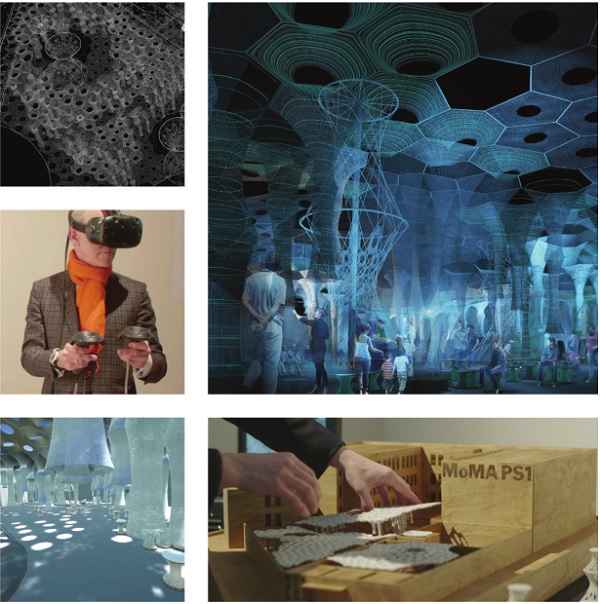
3 Lumen proposal drawings and model with immersive VR experience
The canopies are digitally fabricated with over 1,000,000 yards of high tech, responsive yarn and are supported by three over 40 foot tensegrity towers and the surrounding matrix of courtyard walls. Material responses to sunlight as well as physical participation are integral parts of our exploratory approach to the 2017 YAP brief.
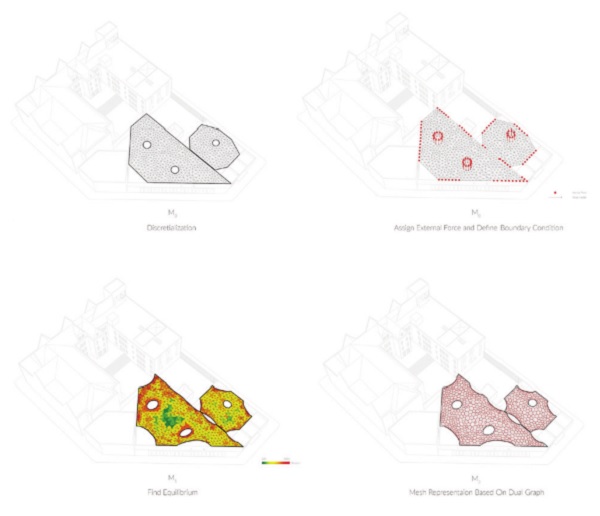
4 The form-finding process of the canopies based on particle spring systems
The project is mathematically generated through form-finding simulations informed by the sun, site, materials, program, and the material morphology of knitted cellular components. Resisting a biomimetic approach, Lumen employs an analogic design process where complex material behavior and processes are integrated with personal engagement and diverse programs.
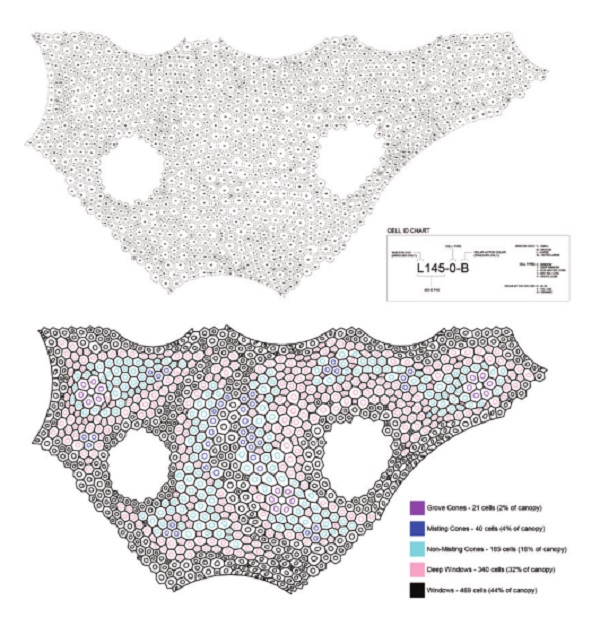
6 Cell and cone distribution within the large canopy in courtyard 1.
The comprehensive installation was designed by Jenny Sabin Studio and fabricated by Shima Seiki WHOLEGARMENT, Jacobsson Carruthers, and Dazian with structural engineering by Arup and lighting by Focus Lighting.
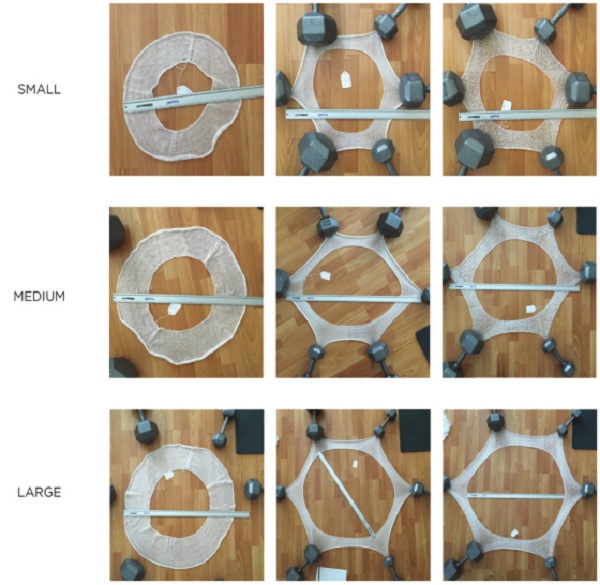
8 Prototypes produced for Lumen to achieve a more nuanced range of stretch factors ranging in size from XS to XL .
Held in tension within the PS1 courtyard matrix of walls, Lumen applies insights and theories synthesized from 13 years of collaborative work across disciplines including biology, materials science, mathematics, and engineering.
Lumen, the largest knitted architectural installation ever erected and composed of over 1,000,000 yards of yarn, undertakes rigorous interdisciplinary experimentation to produce a multi-sensory environment that is full of delight, inspiring collective levity, play, and interaction as the structure and materials transform throughout the day and night. Lumen is a socially and environmentally responsive structure that adapts to the densities of bodies, heat, and sunlight.
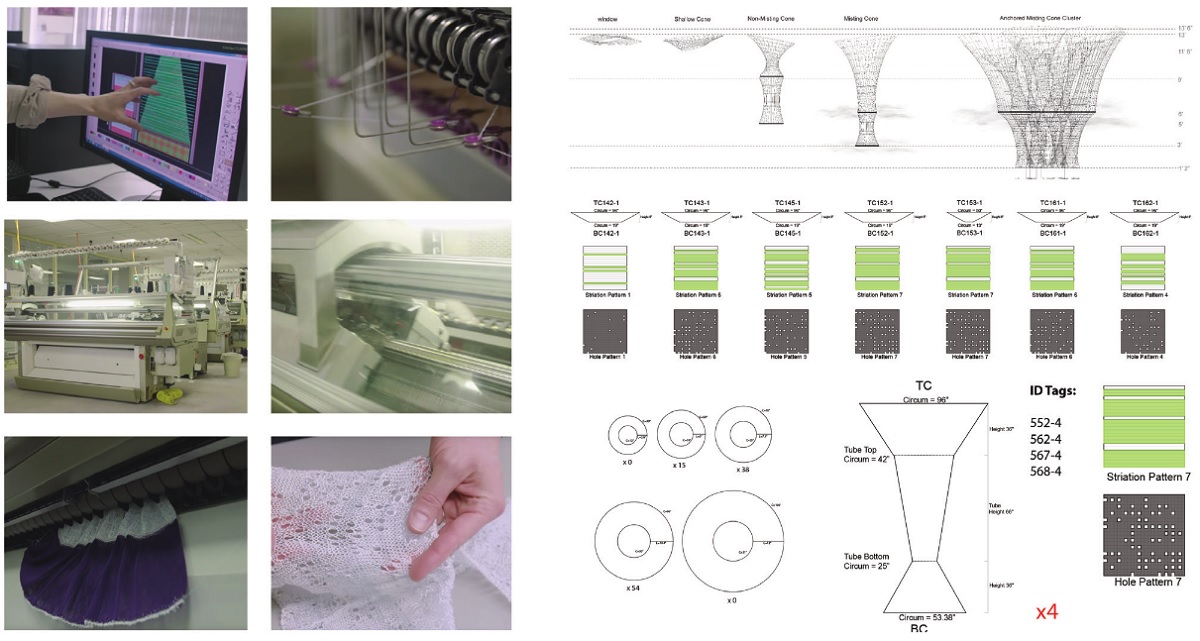
9 Knit fabrication at Shima Seiki (left) and technical specifications for 3D seamless digital knitting of a sampling of Grove Cones and Deep windows (right)
The Young Architects Program (YAP) is an internationally acclaimed annual competition hosted by MoMA and MoMA PS1. The project brief calls for a comprehensive installation to serve as a backdrop to summer events held in the PS1 courtyard, including WarmUp.
The winning project must provide shade, water, seating, and incorporate materials and design strategies that address sustainability and recycling. In addition to these requirements, the 2017 YAP brief encouraged projects to address the topics of transformation and materiality in architecture.
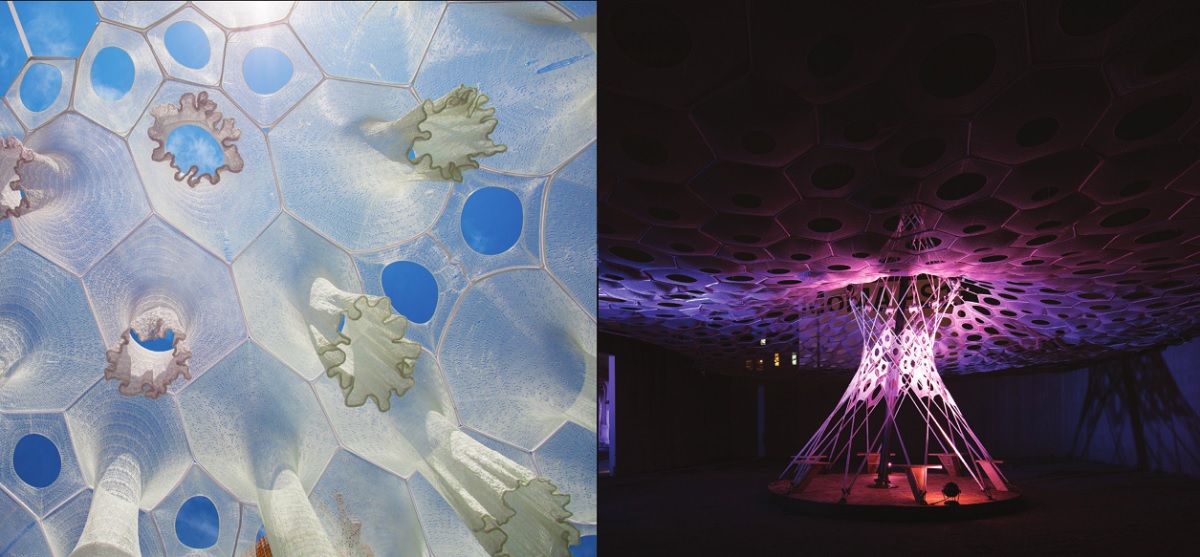
Responding to the PS1 YAP brief as well as the highly constrained nature of the courtyard site, Lumen materializes ideas of performance and adaptation at all scales of the project and specifically through seamless 3D digitally knit and textile-based fabrication processes.
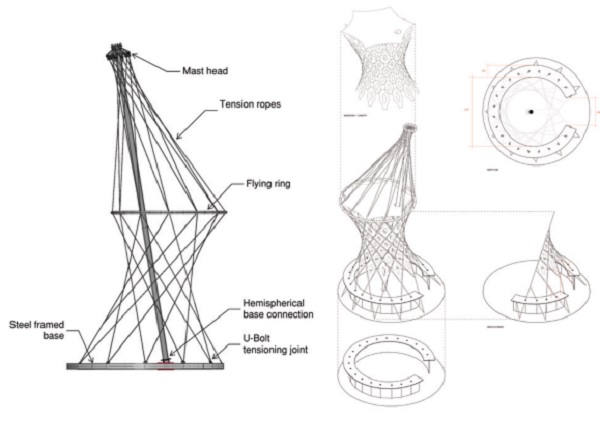
11 Tower elevation and components.
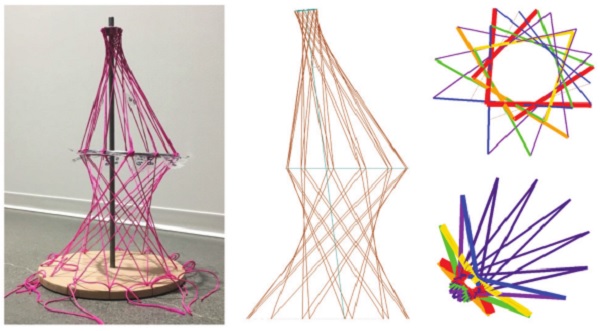
12 Scale model (left); analysis model (middle); variation in rope tensions at top and bottom (right)
Drawing synergies with current work at the intersection of computation, knit structures, and textile architecture, Lumen celebrates and shares topical themes of responsivity, variation, and material performance as can also be seen in the work by Ahlquist, CITA, and Scott.
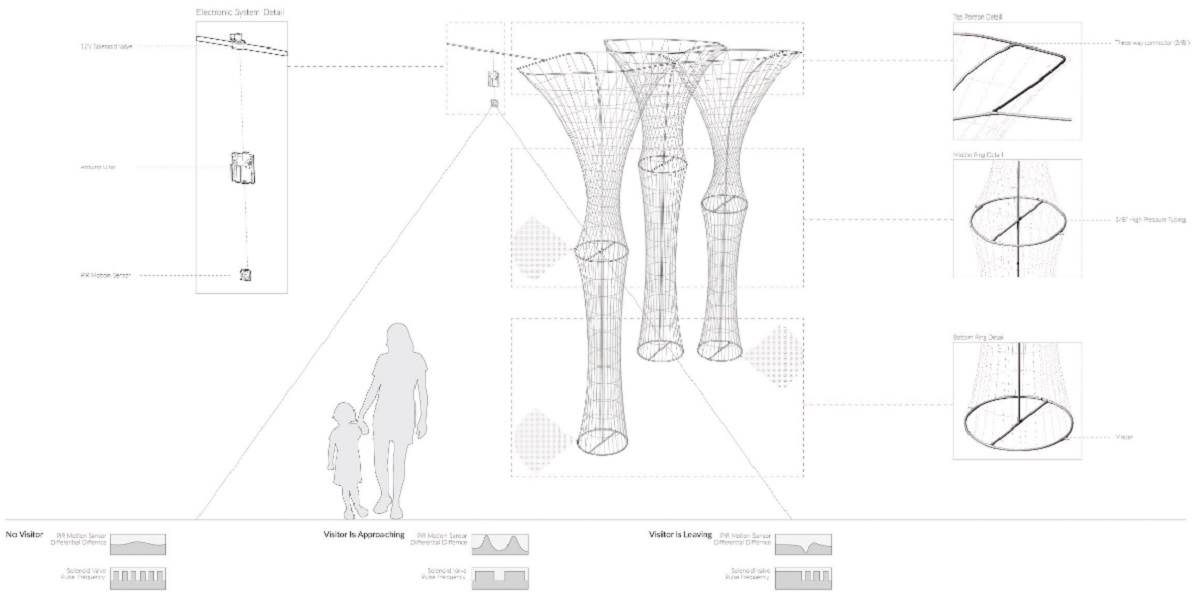
13 Diagram of interactive misting system.
Having designed, fabricated, and built five previous projects featuring responsive structural fabrics composed of individually digitally knit cellular components, we felt confident that the material system was ready to be pushed to the scale of the MoMA PS1 courtyards and an outdoor environment enjoyed by thousands of people. Although Lumen was not designed or engineered for permanent installation, the project weathered extreme summer rain and flooding and the most well-attended WarmUp events on record at MoMA PS1.
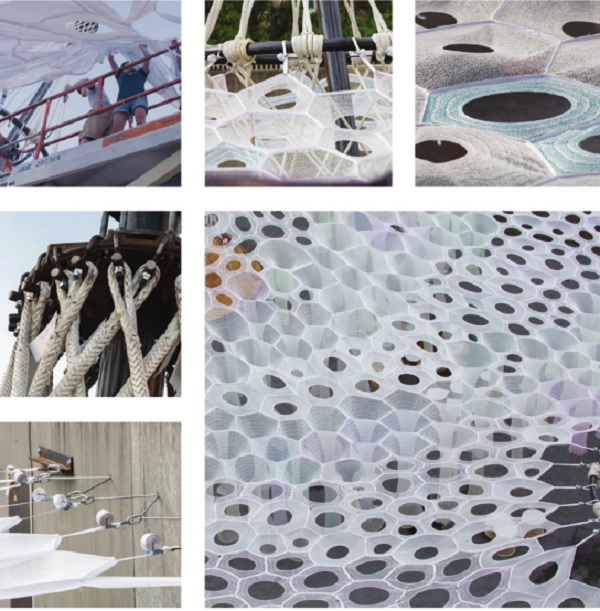
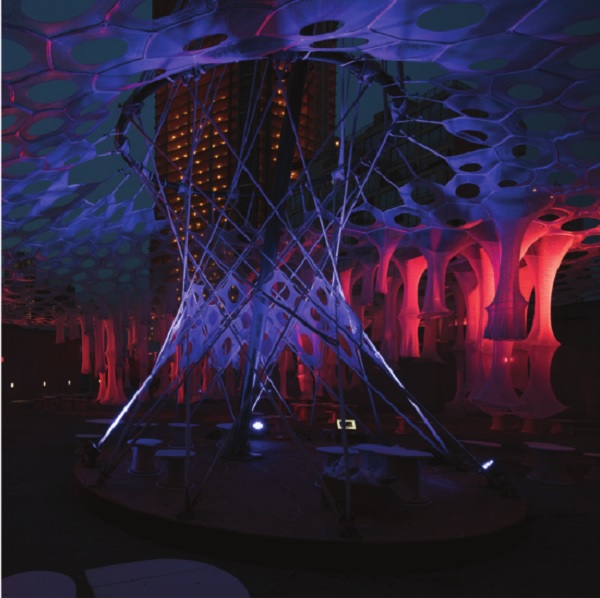
14 Lumen details (left) and at night in the main courtyard with photoluminescent yarns activated.
Together with Arup, we were able to move from a pavilion scale to a large outdoor tensile installation capable of housing over 7,000 people. Although locally delicate, Lumen’s spatial and material systems are inherently variable, adaptive, globally strong, and interactive and are poised to be designed and assembled as permanent inhabitable structures.
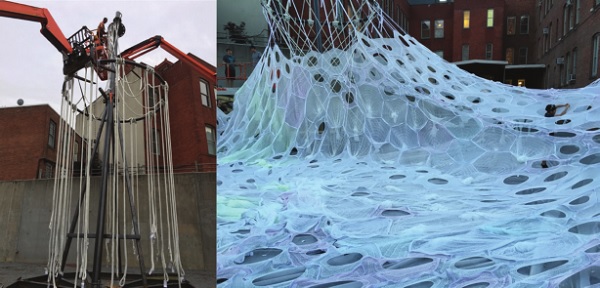
16 Tower and canopy installation
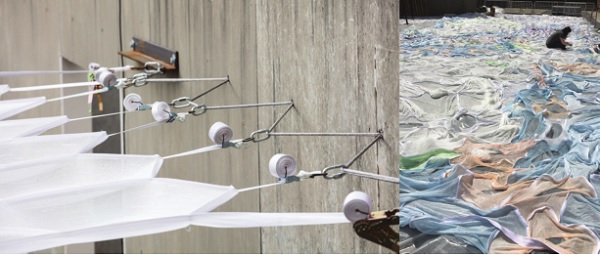
21 Perimeter edge details (left) and unfolding and preparing the canopy for installation; solar active yarns revealing their colors in the presence of the sun (right)
Currently, we are researching and developing three areas that will allow permanent installation of future projects like Lumen, including: 1) Finer scale manipulation of the responsive yarn to create tunable actuators within the programmed material; 2) coatings of the yarn to protect larger knitted components from extreme weather conditions such as heat, wind, and sand storms in a desert climate; and 3) stress tests with larger gauge yarn (increased to 1500 Denier) to generate more robust parts. Permanent commissions in Abu Dhabi, Portland, and New York are allowing for these new refinements and future installments.
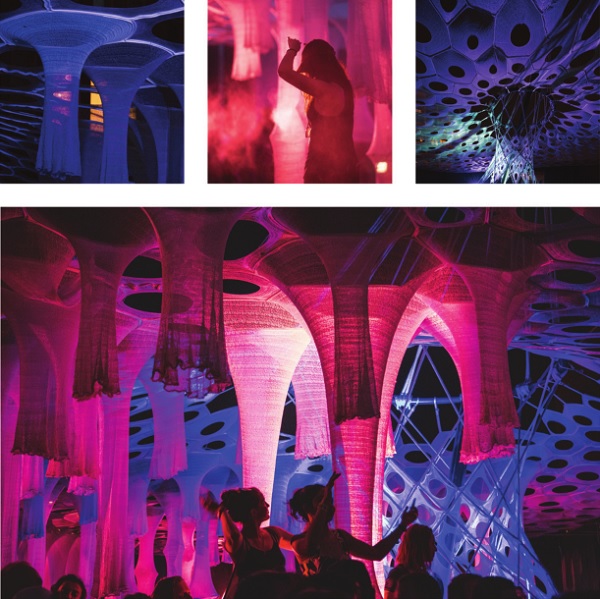




























Comments